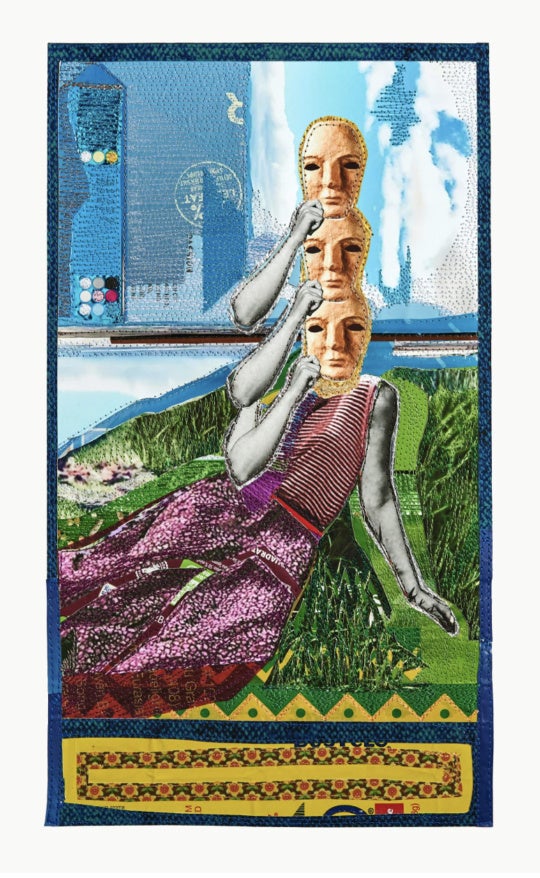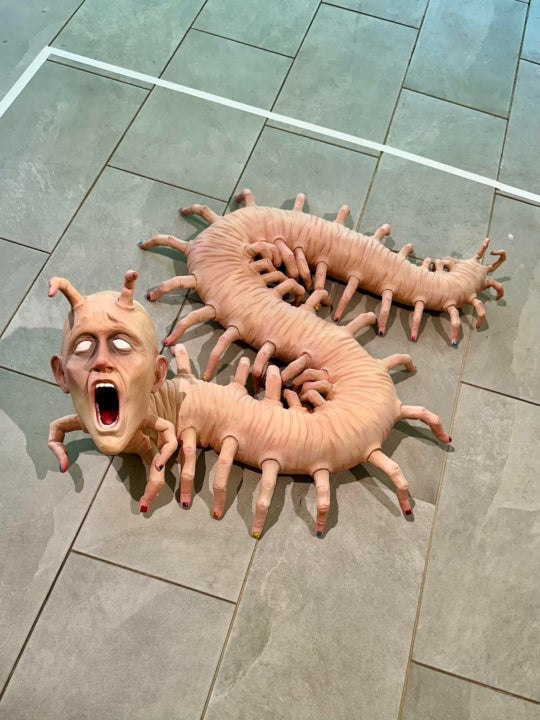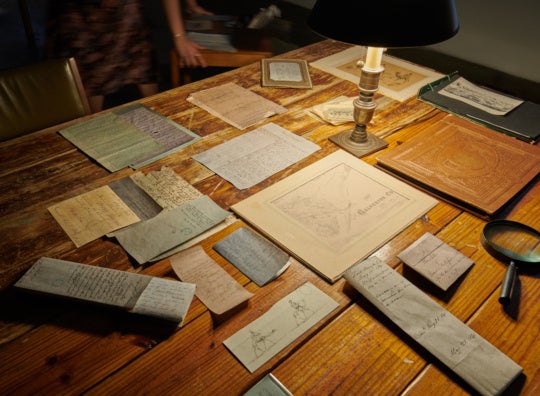
(un)real at Mint Gallery
Recently on view at Mint Gallery, (un) real, featured 20 undergraduate and graduate students from the Georgia State University department of Art and Design [May 2-6, 2013]. Curated by Candice Greathouse, Curtis Ames, and Chris Langely of the Georgia State University’s Art Student Union, (un) real impressed with sophisticated use of materials as well as a perceptive theme that pervades each work in fresh ways. (un) real aims to reveal subjective experiences of the artists’ perceptions without being too insular. One such work is Clovice Holt’s video, Iconversation, constructs, using television talk-show clips, a lucid conversation which accurately harnesses the ambiguous frenzy of media and our infatuation with celebrity authority. Oakdale and Whitefoord, a sculpture made of found doors by Alexander Paulino, highlights strategic neighborhood divisions in Atlanta. Jordan Stubbs’s #TheLastSupper, a photograph and iphone with Instagram feed, synthesizes religious iconography with internet popularity to reveal how it becomes a replacement for social idols without merit. Stubbs poses a hurdle for artists who comment on how social media distracts us from ethical value while using that technology as a platform for their work. Is it possible to question the ethics of a medium while depending on it for the artist’s message?
-Stephanie Dowda

The Poetics and Politics of Land Use
ART PAPERS LIVE! and Emory Visual Arts Gallery present Matt Coolidge from the Center for Land Use Interpretation
Matthew Coolidge is on a mission to chronicle America’s in-between and terminal landscapes. (By terminal he means “going nowhere.”) Part radical librarian, part wholistic environmentalist, he uses art to teach about the unseen realities of the physical world that surrounds us. As the founder and director of the Center for Land Use Interpretation (CLUI), headquartered out of L.A., he spoke to an Atlanta audience at Emory University on May 22 as part of ART PAPERS LIVE! Lecture series.
Coolidge is a hybrid, a hero and a humble humorist. Creatively interpreting curatorial practice, he sends tour buses to the bottom of gravel pits and the top of garbage mountains. He arranges for peripatetic exhibits to roll through central Kansas and New Mexico in cute little trailers, protected only by a simple metal lockbox. In service to public history, his institute amasses data from all corners of the country, digested into curious categories and freely available online. There are study centers, regional offices and residency programs in Wendover, Utah, New York City and the Mohave Desert, to name a few.
His slide show travels through CLUI’s impressive, exhibit history, which focuses on both regional and thematic exhibitions: Subjects include abandoned earthworks (Earthworks and Entropy), helicopter pads in L.A., subterranean tourist architecture, underwater ghost towns, entombments for radioactive materials, and automobile test tracks interpreted as contemporary Nasca lines (Autotechnogeoglyphics). As our narrator, we sense his unique ability to analyze and disseminate information about our land, so deeply impacted by late industrialization. And, in this way Coolidge plays politics with his art. Images need to be good enough to convey the impact of the story, but not too good either, or they might be slick or disingenuous.
Nature as romanticized place, uninterrupted by human beings is not what you will find at CLUI. Presented instead is a growing archive of places which document how humans have altered, interacted but also fit into the environment. And surely, this will change over time.
-Karen Tauches

Mike Black’s Passages, at Kibbee Gallery
Black walks the line between control and chance
Nearly everyday, people pass by water stained walls, cracks in the sidewalk or splatters of spilled paint. To many people, these are flaws that are in need of repair, but to others these are examples of aesthetically pleasing, colorful and artistic design created by chance.
Mike Black’s work in Passages, recently closed at Kibbee Gallery, reflects the beauty that one may encounter in the street on any given day [May 4-25, 2013]. Black uses various materials to which basically anyone has access: found pieces of wood, scrap metal, Quickrete, acrylic paint, corrugated tubing and PVC pipe. His background in sculpture and his eye for design are evident, and the pieces of work show Black’s ability to see artistic potential in materials that other people would leave on the scrap heap. When viewing the piece True Cyan, one may feel that it looks familiar, like something in the back of a building, or in a basement where pipes often leak. But Black’s choice of color shows that he knows what he’s doing: He’s walking the line between control and chance and is pulling it off well.
-Scott Daughtridge
House rules for commenting:
1. Please use a full first name. We do not support hiding behind anonymity.
2. All comments on BURNAWAY are moderated. Please be patient—we’ll do our best to keep up, but sometimes it may take us a bit to get to all of them.
3. BURNAWAY reserves the right to refuse or reject comments.
4. We support critically engaged arguments (both positive and negative), but please don’t be a jerk, ok? Comments should never be personally offensive in nature.




